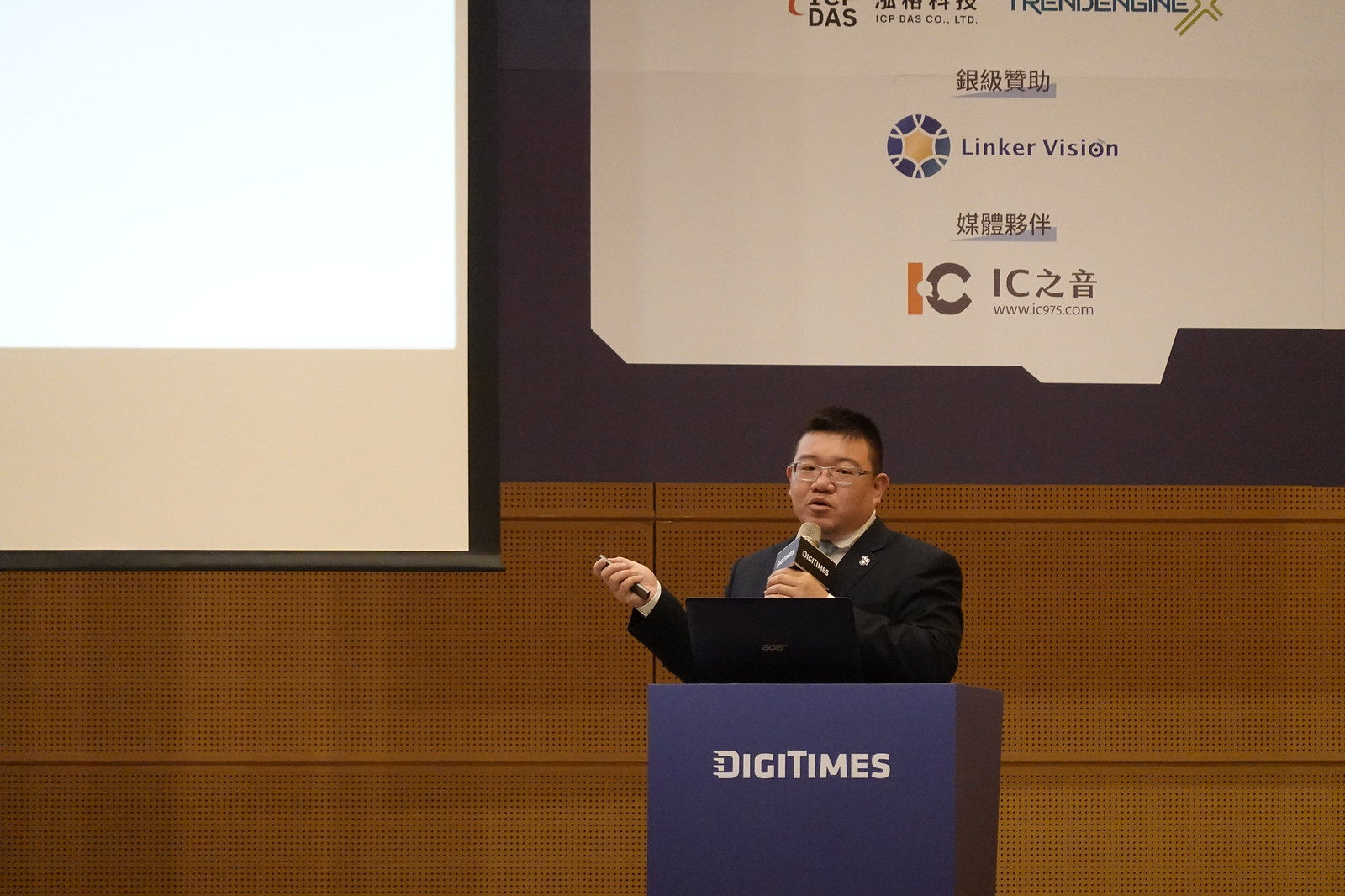Several companies from various sectors were invited to share their experience in ESG transformation at a forum titled "ESG technologies and AI applications" organized by DIGITIMES in Kaohsiung on Jan. 26.
As carbon reduction takes center stage across industries amid the sustainable development trend, the forum tapped into business opportunities of green technologies, helping enterprises enhance their competitiveness in face of green transition and regulatory changes.
D&B's data-driven sustainable management addresses ESG risks
Dun & Bradstreet (D&B), with a 32-year history in Taiwan, views data as a crucial resource for managing businesses and markets, and with artificial intelligence (AI) modules, companies can better consolidate and analyze data on procurement, risk control, and other areas to address ESG risks in the supply chain.

Huang Chen-hsun, Dun & Bradstreet's sustainability consultant (Photo: Hsu Tsu-lin)
According to D&B's sustainability consultant Huang Chen-hsun (黃晨熏), the company's sustainability label is built upon six major international sustainability standards such as the Carbon Disclosure Project (CDP) and the Sustainability Accounting Standards Board (SASB), and utilizes its data on 35 million companies and 31 sustainability issues, including greenhouse gas emissions and waste management, to help companies conduct an ESG "health check" and compare their performance with their peer groups.
The focus of the assessment is not on scoring, but on continuous monitoring of changes at each stage to enhance supply chain resilience, he said.
According to D&B's study of data from the past five years, ESG ratings are highly correlated with revenues. Companies are advised to set sustainability goals, take action, and continuously improve to address the issues.
ESG transformation for SMEs in green finance era
Li Ting-lin (李亭林), associate professor of the Department of Asia-Pacific Industrial and Business Management at National University of Kaohsiung, shared her views on ESG transformation from the perspective of small and medium-sized enterprises (SMEs).
According to Li, SMEs are facing internal and external pressures, including the EU’s carbon border adjustment mechanism (CBAM), the Financial Supervisory Commission (FSC)'s requirement for listed companies to provide sustainability reports, and rising raw material costs.
As Taiwan heavily relies on export trade, it must align with the net zero trend, she said, pointing out that SMEs are ill-prepared for the transformation, as they are uncertain about the amount of investment, how to apply new technologies, and do not have enough talents or a clear path to follow.

Li Ting-lin, associate professor of the Department of Asia-Pacific Industrial and Business Management and EMBA executive director at National University of Kaohsiung (Photo: Hsu Tsu-lin)
As the market is moving towards green finance, enterprises may face financing difficulties if they do not reduce carbon emissions.
Li suggested that SMEs start by taking a top-down approach to make an inventory of talents and equipment, enhancing the internal awareness of ESG transformation. Then, focus on a small-scale and specialized process, such as a certain production line or department, and implement standardized operating procedures. This approach allows for a more accurate effectiveness evaluation of the transformation after the introduction of new technologies.
In addition, company should also adopt digital energy management for water, electricity, fuel, and other resources, and optimize production processes, sales, and distribution through smart systems or information and communication technologies to follow major manufacturers to join the green supply chain.
MIRDC assists enterprises in conducting carbon inventories
Hu Chang-ming (胡昌明), deputy director of the Service Innovation and Development Department of the Metal Industries R&D Center (MIRDC), believes that carbon reduction can be achieved anywhere, and that while individuals can lead a low-carbon lifestyle, so can enterprises.
The first step in energy conservation and carbon reduction is understanding how much greenhouse gas one emits annually, he said.
In 2022, MIRDC became a part of the carbon inventory certification organizations, assisting more than 60 companies in carbon inventory in 2023, with plans to apply to become a carbon footprint certification organization this year.

Hu Chang-ming, deputy director of the Service Innovation and Development Department at Metal Industries R&D Center (Photo: Hsu Tsu-lin)
Hu said that the carbon inventory process, including the compilation, analysis, and verification of data, highlights the importance of digitization, which serves as the foundation for a company's low-carbon transformation.
Carbon inventory involves five steps. First, identifying the baseline year for evaluating carbon reduction effectiveness based on reliable historical data and setting the scope of the inventory.
Next is assessing greenhouse gas emission sources to identify stationary emission sources. Then, calculating emissions and generating the inventory report, followed by internal and external verification.
The inventory is just the beginning, and companies will establish reduction goals and strategies accordingly to enhance their carbon management capabilities, Hu said.
Smart energy management system monitors carbon emissions in real time
ICP DAS is committed to providing automation and energy management solutions to help businesses explore new ways to achieve ESG, with its smart meters and power monitoring technologies gradually becoming important tools for carbon reduction.

Chao Ying-jie, director of the R&D Department at ICP DAS (Photo: Hsu Tsu-lin)
Director of the R&D department Chao Ying-jie (趙英傑) shared a carbon reduction example in the casting industry.
The first step involves digitizing all information, installing smart meters on equipment such as induction furnaces and silicon steel weighing machines to send power information to the mainframe in real time, and integrating parameters such as raw material weighing and environment on the information display host, and then sending the data back to the carbon management system for operators to understand the status of carbon reduction.
Using 2022 as the baseline, the foundry achieved a 22% energy saving rate and an 18% reduction in scrap rates from January to October 2023, cutting nearly 800 tonnes of carbon emissions.
Chao said that carbon reduction has no shortcuts and requires adjusting strategies according to different industries and equipment, adding that companies should take sustainable actions as early as possible.






